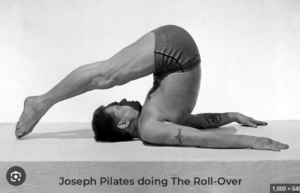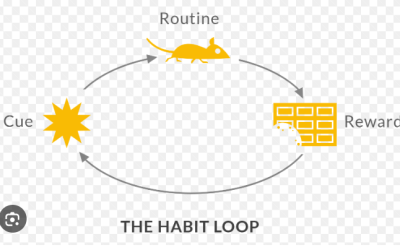Reflections on an excellent conference hosted by Tech industry Alliance on an important topic.
What is tokenism?
Diversity without inclusion.
A forced form of diversity that is superficial. Picking someone for their gender, race, sexuality, neurotype, disability to improve the optics.
Diversity offers a seat at the table, but without listening to the voice in that seat, they will never belong.
Belonging is where tokenism ends.
And that was just the opening remarks.
We were treated to diversity of thought in spades from the two excellent panels. As a listener the experience was vastly enriched by the diversity of lives and lived experiences on these panels. I was enlightened and challenged and excited by their ideas and opinions. Yes the panels were diverse because of the day that was in it, but I couldn’t help reflecting that all panels on all topics should be diverse, with the benefits being broader and richer insights on their chosen topic, leading to better, more innovative and more inclusive decision making outcomes.
I can’t help write this and be reminded of something I saw last week, of the nearly all male panel due to begin discussing women’s health in Canada :

I wonder two things : is this panel best placed to discuss the topic at hand, women’s health? And is the woman in the bottom right corner an example of the tokenism I have just mentioned? As the only female voice around that table, how likely is it that her voice will be heard? Research and experience would tell us not very likely.
‘When your difference is that they want your difference, but they won’t listen to it’. Include me, but listen to me. Don’t bring me to the table and ignore me. Powerful insight from the Remi Kolawole on the panel.
Disability reality check
Sharon McCarthy of Autism Journeys took to the stage and blended storytelling with hard hitting facts to deliver a riveting keynote.
Try this statistic on for size : 1 in 5, or 22%, or 1.1 million in Ireland are disabled. (CSO, 2023) are you surprised? Does it seem like ‘a lot’? If so, then you need to broaden your lens as to what disability is. In fact this was reiterated throughout the panels, that disability encompasses much more than we generally think. Probably because we are thinking of physical disabilities, such as a wheelchair user, or a blind dog assisted person. Invisible disabilities range from ADHD to dyspraxia to neurotype anxiety to sight – impaired to MND (motor neuron) and many in-between.
Does this now make you think differently about disability? It should. Because disability is really broad, and most of it is invisible.
Universal design
Sharon noted that the disabled voice needs to be kept central at all times, and my ears immediately pricked up, as this is a central tenet in design thinking, to keep the persona you are designing for central at all times and in fact to cocreate with them, not create for them. Clare Kenneally was signing from my songsheet when she said that universal design is the only show in town. As Clare pointed out, ‘when I have all the equipment that I need, I’m not disabled. It’s my environment that disables me’.
I’m a left – handed person and I have spent my whole life adapting myself to the right – handed designed world that I live in. Currently, the world and its physical spaces, products, systems and processes are designed for the norm, the median, the average. This norm that we have been designing for is able – bodied, neuronormative, right – handed, male or female. Anyone who doesn’t fit into that ‘normal’ is then disabled in someone or another by their environment.
But it’s no longer fit for purpose, because diversity is the norm today, to be fair it always was but it is only now we are becoming aware and accepting of that fact. And so we need to design for the diverse, and that means universal design, designing for the edges and accommodating all. An example of universal design of environment suiting all happened at the conference. We were treated to a sensory sensitive room, where the garish lighting was dimmed, and sensory lighting panels changed colours. I didn’t notice this, until the main lights were turned on, and everyone in the room visibly recoiled from the sudden harsh shock to their system. The sensory sensitive environment was an improvement for all.
For the person with the disability, universal design has the important benefit of being incorporated into their environment, meaning they don’t have to disclose their disability and request accommodations, which can make them feel, and be, othered.
As Sharon said ‘equity looks like there is no requirement for disclosure’. And if you need a ‘bottom line’ motivator, ‘’in a space of safety, people become more productive’.
Accessibility is the baseline, universal design is the target.
Unconscious Bias & Disability
As an unconscious bias trainer and facilitator I knew a little about this. But an insight from Dr. Amamullah DeSondy still took me by surprise ‘people who are fluent in the english language get heard better’. I knew accents can be a cause for unconscious bias, but this insight was clearly a blindspot for me, coming from a place of privilege where English is my first language. That’s the tricky thing about privilege in relation to this topic, it is usually unseen by those who have it. If you are able – bodied and neuronormative for example, then while you might not relish taking the bus or sitting an interview, neither are a source of distress and even pain for you. And that’s a privilege.
I love a set of practical tips to make knowledge more accessible, so from the panel here’s some tips to improve the outdated typical interview process and make it more inclusive:
- Remove the expectation to be a social communicator – eye contact is overwhelm for many
- Be flexible and offer alternative ways to interview
- Send in a recording
- Video call with camera off
- Real time email or text Q&A session
- Create predictability – send questions in advance
- Send on photos of the interviewers – again to give predictability
For leadership and hiring managers, the advice was clear :
- Have the right motives – are you diverse in public only, or do you truly embody the values of diversity, inclusion, belonging and equity in your lived practices.
- Be intentional
- Lead by example ‘when a fish rots, it rots from the head’. An image so powerful, it lands with a smell!
- Continually evaluate
- Don’t take your foot off the mark when you have ‘done tokenism’.
Allyship
‘Support with meaning’
Because the minority groups can’t achieve equity without the support of us all.
Because there’s a power dynamic at play between those who have privilege and those who lack it.
Because if I don’t belong I won’t be heard, and if I’m not heard, nothing improves for me.
Because we are all human beings on a journey and we need support, and support should be embedded, not added on.



